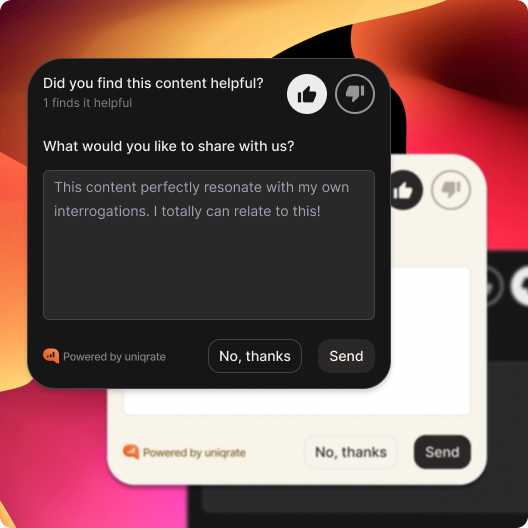Blogger remains a popular platform for creating and managing blogs, but one area where it falls short is the ability to gather and act on reader feedback. Feedback is crucial for improving your content, understanding your audience, and boosting engagement.
In this article, we’ll explore strategies and tools to collect reader feedback on Blogger and how to use it to refine your blog, increase interaction, and generate leads.
Why reader feedback is essential for Blogger users
Feedback provides insights that go beyond surface-level metrics like views or bounce rates. It tells you what your audience values, what needs improvement, and how you can better meet their expectations.
Benefits of gathering reader feedback:
- Improved content quality: Understand which topics resonate most with your readers.
- Stronger engagement: Interactive feedback tools encourage readers to connect with your content.
- New content ideas: Identify topics or formats your audience wants to see next.
- Lead generation opportunities: Use feedback forms to capture email addresses and grow your subscriber list.
How to collect reader feedback on Blogger
Blogger doesn’t offer built-in tools for advanced feedback collection, but you can use third-party tools and creative strategies to engage your audience effectively.
1. Embed a feedback tool
Adding an interactive feedback tool like Uniqrate to your Blogger site can streamline the process of collecting reader input.
Features of Uniqrate’s feedback island:
- Vote: Let readers rate articles based on their usefulness.
- Comment: Collect qualitative feedback directly from your audience.
- Engage: Capture emails in exchange for downloadable resources or special offers.

2. Use comment sections effectively
Blogger’s built-in commenting system is a simple way to gather reader feedback. To maximize its effectiveness:
- Encourage readers to share their thoughts by asking open-ended questions at the end of posts.
- Regularly moderate and respond to comments to foster community engagement.
3. Integrate surveys or polls
Surveys are a structured way to collect targeted feedback. Use free tools like Google Forms or SurveyMonkey to create polls and embed them in your blog posts or sidebar.
- Examples of survey questions:
- “What topics would you like us to cover next?”
- “How would you rate the usefulness of this article?”
4. Encourage feedback via email
If you maintain an email list, ask subscribers for feedback on your blog or recent articles. You can:
- Share a survey link in your email campaigns.
- Invite readers to reply directly with suggestions or comments.
5. Incorporate social proof
Displaying feedback metrics or reader testimonials can encourage more interaction. For example:
- “100 readers rated this post as helpful.”
- Include positive quotes from reader comments or emails.
How to use reader feedback to improve your blog
Once you’ve collected feedback, it’s time to put it into action.
1. Refine your content strategy
Analyze feedback to identify patterns and trends. Use this information to:
- Create more content on high-demand topics.
- Address recurring questions or gaps in existing articles.
- Experiment with new formats, such as video tutorials or infographics.
2. Enhance user experience
Feedback about your blog’s layout, navigation, or design can guide you in making improvements:
- Ensure your blog is mobile-friendly.
- Simplify navigation to help readers find what they’re looking for.
- Reduce page loading times to minimize frustration.
3. Turn feedback into lead-generation opportunities
Use tools like Uniqrate to combine feedback collection with lead generation:
- Offer a whitepaper, guide, or discount in exchange for an email address.
- Follow up with personalized emails that align with the feedback provided.
Example: If a reader rates an article on “SEO Basics,” offer them a free advanced SEO checklist via email.
4. Show readers their feedback matters
Demonstrate that you value reader input by acting on it:
- Update articles based on feedback and share the changes with your audience.
- Thank readers who provide valuable suggestions in comments or emails.
Tools to enhance reader feedback on Blogger
Here are some tools that pair well with Blogger for collecting and analyzing reader feedback:
- Uniqrate: Adds an interactive feedback island for ratings, comments, and email capture.
- Google Forms: A simple, free solution for surveys and polls.
- Disqus: A comment system with advanced moderation and engagement features.
- SurveyMonkey: For creating more detailed surveys and collecting structured data.
Conclusion
Collecting reader feedback is essential for making your Blogger site more engaging and effective. By using tools like Uniqrate, leveraging comment sections, and acting on the feedback you receive, you can improve your content, enhance user experience, and grow your audience.
Start collecting reader feedback with Uniqrate and take your Blogger site to the next level!
